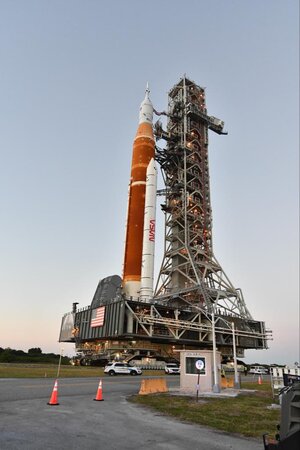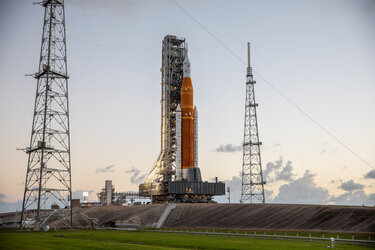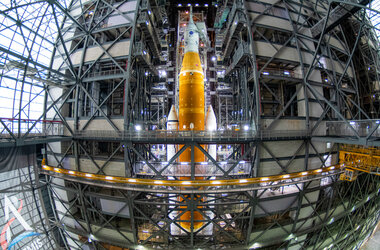
Artemis Moon rocket first rollout
A timelapse video of NASA’s mega-Moon rocket with Orion and the European Service Module inside being transported to the launchpad at NASA’s Kennedy Space Center in Florida, USA.
While the rocket will propel Orion to supersonic speeds, the rocket itself is moved slowly but securely to the launchpad. These scenes have been sped up on average 20 times faster than actual speeds, with the shots of at the end 50 times faster. Traveling at a maximum speed of just 1.3 km/h, the 6.5-km voyage took nearly 12 hours to complete on a specially designed crawler vehicle.
The Space Launch Systems rocket (SLS), with Orion atop it, left the Vehicle Assembly Building at NASA’s Kennedy Space Center at around 23:00 CET (22:00 GMT) on 17 March to begin its 6.5 km trip to Launchpad LC39B.
The first Artemis mission will send Orion to the Moon and back, farther than any human-rated spacecraft has travelled before. ESA’s European Service Module is the powerhouse that fuels and propels Orion and provides everything needed to keep astronauts alive, including water, oxygen, power and temperature control.
At 100 m tall, the SLS rocket is roughly the height of the Elizabeth Tower (Big Ben) in London, UK, or 16 giraffes stacked on top of each other. If you laid the rocket on the ground, it would take over a minute to walk from the engines to the tip of the launch abort system.






